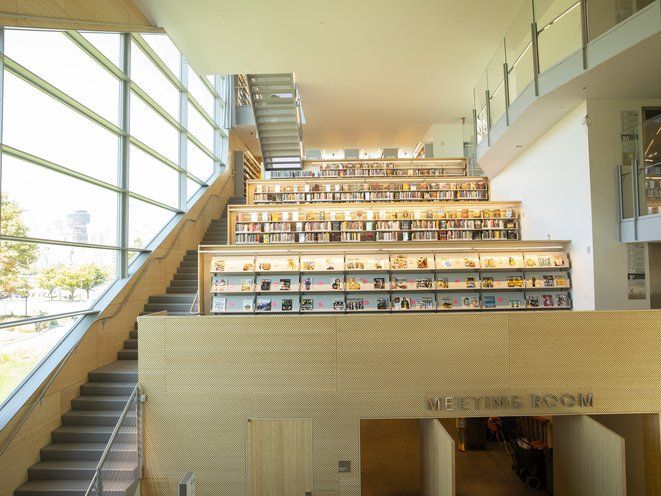An initial statement from the library justified this decision by claiming that librarians would be able to retrieve books for patrons. However, this failed to address the possibility of disabled librarians being unable to reach these inaccessible stacks, too. The large building is partially served by a single elevator.
The Library’s Response
Since this story broke on October 4th, the library has announced that it’s moving the contents of those three floors into accessible areas. However, this does not change the fact that significant areas of this library are essentially unusable. In an industry where book storage space is precious, the oversight on the parts of the library planners is doubly egregious. It is hard to imagine spending close to two decades on this project without noticing the inaccessible floors.
Orrrrr you could have just made the library accessiblehttps://t.co/FkBpBYBWAC — Kendra “Gloom is My Beat” Pierre-Louis (@KendraWrites) October 4, 2019 This architectural decision is particularly puzzling in light of the fact that older patrons represent an important demographic for libraries. Paper-printed books are still central to the library experience of many senior citizens. The normal health concerns of aging bodies also preclude climbing entire banks of staircases just to browse fiction shelves. According to Pew, two thirds of visitors still use the public library primarily to borrow books. Planning to place books inaccessibly implies that both disabled patrons and the printed word are secondhand concerns to this branch, falling after impressive architectural design in importance. It also implies a lack of consultation with both ADA experts and librarians. In a $41 million budget, it is amazing that professional architects, staff, and administrators overlooked this step.
Visual effect vs. practicality
The building is complete, the budget has been spent, and the library is undeniably a striking architectural marvel. However, the question of why the library had to be an architectural marvel, and why this was so much more important than accessibility, remains to be answered. At its root, the public library is a practical space. While it’s important that it should be visually welcoming and pleasant, its first job is to provide services. There are libraries that live in town hall basements and still provide adequate services to their communities. They accomplish this by placing patron service first and prioritizing community needs, including accessibility. That clearly didn’t happen in the case of Hunters Point. Any librarian who has worked five minutes on a service desk knows that disabled patrons are common visitors. Patrons with canes, crutches, and wheelchairs all rely on elevator access. Groups of mentally disabled people, sometimes from training programs, adult daycares, or group homes, may also avoid stairs. This may be due to either physical limitations or a desire to keep everybody together. Large staircases even preclude moms with strollers from getting to certain areas of the library without the use of elevators. — Callan Bignoli ✨ (@eminencefont) October 5, 2019
What’s Next?
It’s unclear what the Hunters Point library will do with the three unreachable floors now. They could conceivably function as display areas, storage spaces, or landings for potted plants. But the library can’t use those floors for anything that patrons actually need, like program space or loanable items, and they’re similarly impractable as staff-only areas. In a busy urban library whose award-winning architect took nineteen years to plan this now-infamous building, that’s a real shame. Disabled voices speak! Find some authors who can relate to this experience on our list of books by disabled writers. Little Free Libraries can be a good way to bring book services to people in your community who struggle with mobility problems. Find free and low-cost patterns here. Editor’s note: The original title for this post contained an outdated term for disability. It has since been corrected.
